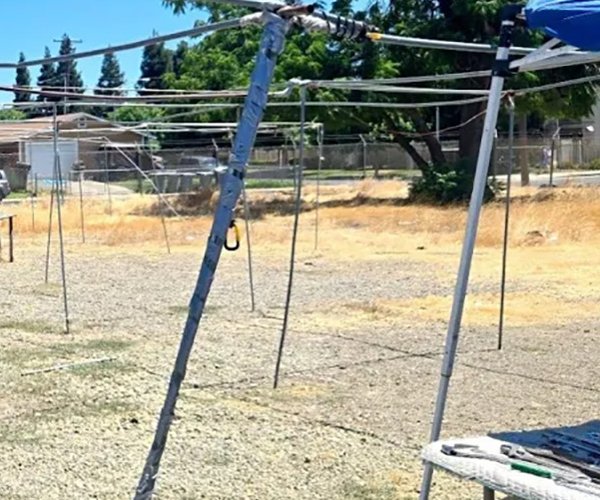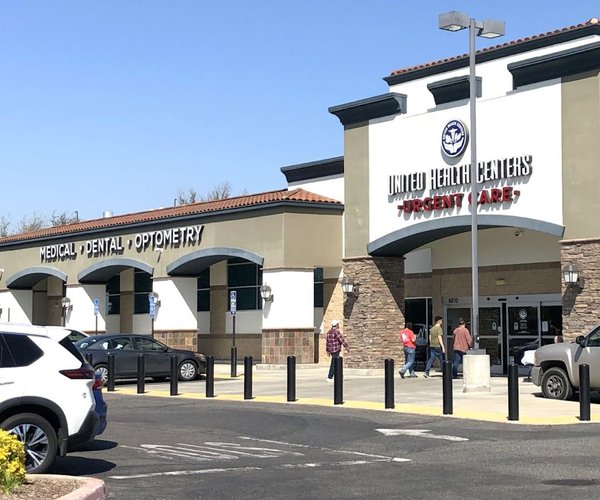The City of Turlock came one step closer to creating a state-mandated area of town where homeless shelters are allowed at a public meeting Thursday night, held at Turlock’s First Baptist Church.
State Senate Bill 2, passed in 2007, does not require Turlock to construct shelters, but to create an area where such emergency housing could be constructed relatively easily, with an over-the-counter permit not requiring review if certain standards are met. The City of Turlock does not currently comply, as shelters are either defined as non-permitted or require a Conditional Use Permit in each zone.
If Turlock does not comply with SB2, the state will not approve the city’s Housing Element, a document which governs housing construction in Turlock. Should Turlock’s Housing Element not be approved, the state may withhold housing grants or transportation funding.
Turlock began the process to comply with SB2 in February 2010 with a public meeting at Westside Ministries, and now is in the final stretch of preparing a document which would head to the state in June.
“We're getting to the point where we have a fairly well-defined ordinance we would like to take forward,” said Turlock Deputy Development Services Director Debbie Whitmore.
The draft area is generally bounded by Lander Avenue on the West, A Street on the northwest, S. Center Street on the northeast, and F Street on the southeast. A peninsula stretches south along Lander Avenue to Linwood Avenue, and another peninsula travels southeast five blocks, between Golden State Boulevard and First Street. That area was developed based on community input during the February 2010 meeting, and further refined to include just Industrial and Commercial Zones at a February council meeting.
Turlock must be able to prove to the state that the zone contains adequate capacity to handle Turlock’s homeless population, estimated at between 400 and 500 individuals per year and 200 beds on a given night. Turlock need not allow more shelters than required to house its fair share of homeless, per the state law; once those 200 beds are constructed, the City of Turlock could return to requiring conditional permits for all new shelters.
Turlock is also allowed to implement certain development standards on new shelters. Among the standards in the current plan is a strict limit on the number of beds allowed in a facility, based on the zoning area: shelters in Community Commercial may have 40, Heavy Commercial 75, Downtown Transitional Commercial 40, Industrial 100 and Downtown Industrial/Residential 100.
Based on that formula, and the 17 properties currently identified by the City of Turlock as available for shelter development, the proposed zoning district could hold 1,300-plus beds, easily meeting capacity requirements.
Turlock’s draft development standards also require shelters be placed a minimum of 300 feet from a park or school, follow Turlock design guidelines and zoning ordinances, shield outdoor areas from public view if within 150 feet of a residential zone, and provide lighted parking, pedestrian and entry areas, with lighting directed away from adjacent uses. Adequate management must be present during hours of operation, loitering must be prevented during off-hours, security plans must be drafted, and stays cannot exceed the maximum set by state law.
The standards also contained a few controversial elements, related to parking, security and pet accommodations. The mandated parking standards would require one vehicle space per employee, an additional space per five beds, and a bicycle parking space per three beds.
“Generally the list of conditions for this process we're in support of, with the exception of a few items,” said Chris Kiriakou, Turlock Gospel Mission Board member. “... I understand parking is an issue, but in our experience we don't see 20 percent of the people driving.”
Kiriakou proposed a parking space for every 20 beds, and one bike space per five beds.
The security requirements – that facilities of greater than 25 beds hire a licensed and bonded security guard, and those greater than 50 beds hire an additional guard – also seemed exorbitant to Kiriakou. To hire a security guard for eight hours each day would cost more than $50,000 a year, Kiriakou said.
“We'd rather spend that kind of money on training someone to become a security person on staff, and then allowing them to perform that service,” Kiriakou said.
Modesto Gospel Mission receives training for its own staff to serve as security.
But employing licensed and bonded security guards is important to the Turlock Police Department, said Captain Rob Jackson. Jackson said licensing and bonding shows the guards are true professionals, who have gone through state training.
“It's something we take very seriously, as far as that level of training and that level of professionalism from the providers,” Jackson said. “We set standards for reasons, and it's tough to go into gray areas in something as important as the safety of the tenants.”
The standard would not necessarily force shelters to hire licensed and bonded security guards, as such individuals could volunteer for free. Maris Sturtevant of We Care said her organization has had an offer of volunteer security people.
Pet limits – three dogs or cats per facility – were also an issue to Kiriakou, who requested an allowance of one pet per 10 beds. The limited number of pets allowed could turn some guests away, Kiriakou said, who wouldn’t stay without their pets.
Not considering potential health, safety and noise issues, the animal issue presents another problem — three animals is the state-proscribed limit before the need for a kennel license is triggered, mandating a whole new set of requirements.
Despite the potential issues, Jackson said he would reexamine the security and pet issues from the police department’s perspective.
“Everything is something we can look at,” Jackson said. “What's right for the community is what's right for the community.”
No formal action was taken at the meeting, which was intended solely to solicit public comment. The Planning Commission will review the meeting at their regularly scheduled 7 p.m. May 5 meeting, to be held in the Yosemite Room of Turlock City Hall, 156 S. Broadway. A draft version of the ordinance is expected at the commission’s June 2 meeting, at which time a recommendation will be made to City Council, which will have the final say.
To contact Alex Cantatore, e-mail acantatore@turlockjournal.com or call 634-9141 ext. 2005.









